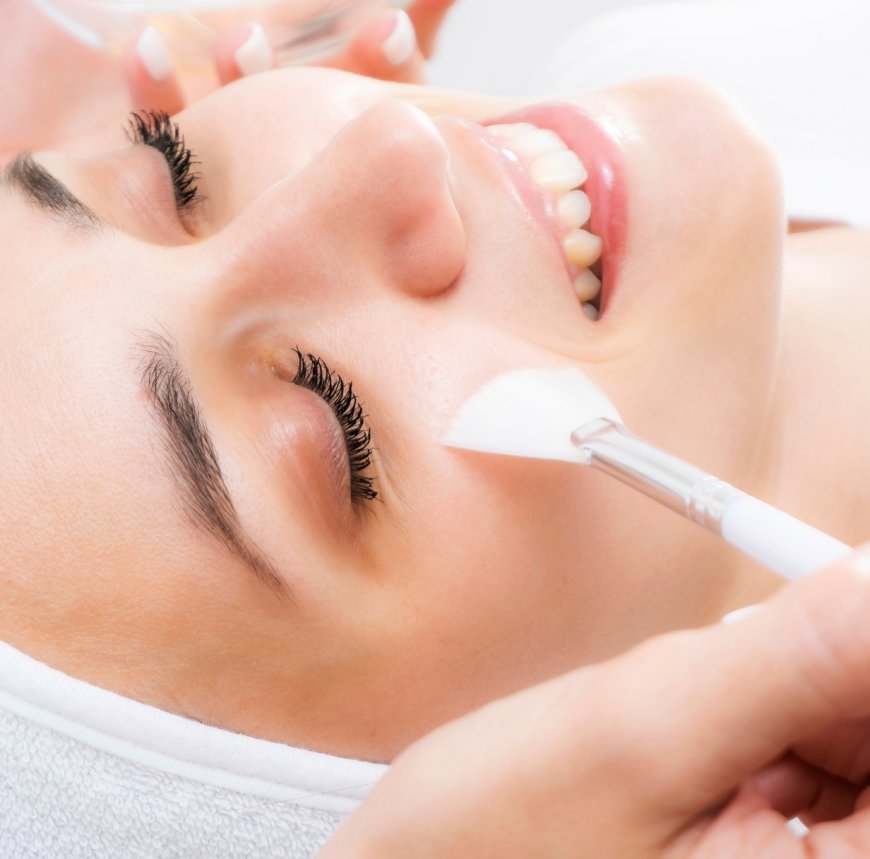The Truth About Downtime After a Chemical Peel

Chemical peels are one of the most effective non-surgical treatments for skin rejuvenation. They exfoliate the outer layers of the skin to reveal a smoother, brighter, and healthier complexion. Many individuals choose chemical peels in Islamabad to treat issues like acne scars, pigmentation, uneven skin tone, fine lines, and dullness. While the results are impressive, patients often wonder about the “downtime” that comes with the procedure. How long will it take before you can resume normal activities? What should you expect during recovery? Let’s uncover the truth about downtime after a chemical peel.
What Does “Downtime” Mean After a Chemical Peel?
Downtime refers to the period when your skin is visibly healing and may not look its best. During this time, redness, peeling, or flaking can occur as your skin sheds the damaged outer layer. The length of downtime depends on the type of peel performed, ranging from a few hours to several weeks.
Types of Chemical Peels and Their Downtime
1. Superficial Peels
-
Description: These peels use mild acids such as glycolic or lactic acid to gently exfoliate the top layer of skin.
-
Downtime: Minimal to none. You may experience mild redness for a few hours, similar to a slight sunburn. Makeup can usually be applied the next day.
2. Medium Peels
-
Description: Medium-depth peels use stronger acids like trichloroacetic acid (TCA) to target deeper layers of the skin.
-
Downtime: Recovery takes about 5–7 days. Skin redness, peeling, and slight swelling are common. You may need to avoid social or professional commitments during this time.
3. Deep Peels
-
Description: Deep peels penetrate multiple layers of the skin and are used for severe wrinkles, scars, and sun damage.
-
Downtime: Extensive recovery lasting 2–3 weeks or more. Redness, swelling, and crusting may occur, and medical supervision is essential.
Day-by-Day Recovery Timeline
While downtime varies, here is a general outline of what you might experience after a chemical peel:
-
Day 1–2: Skin feels tight, red, and sensitive.
-
Day 3–5: Peeling or flaking begins. Avoid picking or scratching.
-
Day 6–7: Most superficial peels heal fully by now. Medium peels continue peeling.
-
Week 2: New skin emerges with a pinkish tone. Makeup can usually be applied.
-
Week 3 and Beyond: Deep peels continue healing. Final results become visible as the skin tone evens out.
Factors Affecting Downtime
Several factors influence how long your skin takes to heal after a peel:
-
Peel Depth: Deeper peels naturally require longer recovery.
-
Skin Type: Sensitive or acne-prone skin may take more time to heal.
-
Aftercare Routine: Following your dermatologist’s instructions can speed up recovery and reduce complications.
-
Lifestyle Choices: Sun exposure, diet, hydration, and skincare products all impact healing.
How to Minimize Downtime
1. Follow Professional Aftercare
Use gentle cleansers, apply soothing moisturizers, and avoid active ingredients like retinol until cleared by your dermatologist.
2. Stay Out of the Sun
Sun exposure during healing can lead to pigmentation and delay recovery. Always apply broad-spectrum sunscreen (SPF 50+).
3. Avoid Touching Your Skin
Scratching, picking, or peeling off flaking skin can cause scars and prolong redness.
4. Use Cold Compresses
To soothe redness and swelling, apply a clean, cold compress for short intervals.
5. Stay Hydrated
Drink plenty of water and keep your skin moisturized to support the healing process.
Common Misconceptions About Downtime
Myth 1: “All Chemical Peels Have the Same Downtime”
Fact: Downtime depends entirely on the depth of the peel. Superficial peels require little to no recovery, while deep peels may take weeks.
Myth 2: “You Can’t Go Out During Downtime”
Fact: For mild peels, you can resume most daily activities almost immediately. With proper sunscreen, outdoor exposure is safe in moderation.
Myth 3: “Redness Means Something Went Wrong”
Fact: Redness is a normal sign of healing. It indicates that your body is working to repair and regenerate new skin cells.
Myth 4: “Makeup Can Cover Downtime Completely”
Fact: While makeup may conceal redness after a superficial peel, it’s best to wait until peeling subsides before applying products to avoid irritation.
Benefits That Make Downtime Worth It
Although downtime may seem inconvenient, the long-term results of chemical peels make the wait worthwhile:
-
Brighter, more radiant skin
-
Reduced fine lines and wrinkles
-
Minimized acne scars and pigmentation
-
Even skin texture and tone
-
Boosted collagen production
These improvements outweigh the short-lived recovery period for most patients.
Tips to Plan Around Downtime
If you are worried about visible peeling or redness, consider these tips:
-
Schedule your peel before a weekend or holiday.
-
Avoid planning it right before major events like weddings or job interviews.
-
Ask your dermatologist about peel types suited to your lifestyle and downtime availability.
Conclusion
The truth about downtime after a chemical peel is that it varies greatly depending on the type of peel you choose, your skin’s condition, and how well you follow aftercare instructions. While superficial peels may only cause mild redness for a day, deeper peels can require weeks of healing. With patience and proper care, the results—a clearer, smoother, and more youthful complexion—are worth the short recovery period.
If you are considering chemical peels in Islamabad, it is important to consult experts who can tailor the treatment to your needs and guide you through a safe recovery. At Dynamic Clinic, experienced dermatologists provide professional advice, customized peel options, and aftercare support to ensure you achieve glowing results with minimal downtime.
What's Your Reaction?


















































